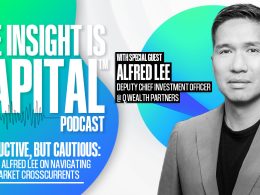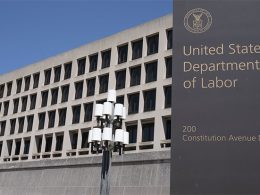by Elga Bartsch, PhD, Head, Economics and Market Research, Blackrock Investment Institute
In her inaugural post, Elga Bartsch explains why elevated trade protectionism marks the greatest downside risk to the global expansion.
Our base case is for ongoing robust global growth, fueled by the U.S. What could change this outlook? We believe surging trade tensions remain the biggest risk to the U.S.-led economic expansion, as we write in our new Macro and market perspectives The danger of elevated trade frictions.
The U.S. is currently shaking up the post-war system of international trade, particularly with tariffs on a wide array of Chinese goods. The BlackRock Geopolitical Risk Indicator (BGRI) for global trade tensions remains elevated along with its counterpart for U.S.-China relations. This signals increased market attention to these risks and underpins our view that the U.S.-China conflict is at the heart of trade concerns.
So far, neither side has shown much willingness to compromise. China has opted to retaliate in an almost tit-for-tat fashion. Yet it will need to explore other strategies because the U.S. buys much more from China than China buys from the U.S. The White House has (temporarily) calmed other trade conflicts, such as renegotiating the North American free trade deal and agreeing to a truce with the European Union.
Read more macro insights in our latest Macro and market perspectives.
If the tariffs on $250 billion of U.S. imports from China are raised to 25% at the start of 2019 from 10% now, as planned, the effective U.S. tariff rate would rise to a level not seen since the 1970s. Even if auto tariffs are excluded, the rise is significant. Largely due to the U.S. moves, average global tariff rates would rise to the levels of the early 1990s–just before the launch of the World Trade Organization. Such revived protectionism arrests a long-term decline in tariffs and intensification of international trade since World War Two.
The trade conflict’s ramifications
The absence of any change to U.S. tariff levels in recent decades makes the macro impact of the current trade actions hard to estimate. What is clear is that the trade conflict has ramifications that go far beyond the bilateral trade channel between the U.S. and China. The damage to the global economy could be much worse for a number of reasons, including the impact on global value chains (GVCs): International trade relations have become far more complex and entwined over past decades.
GVCs can greatly magnify the negative effects of trade actions. The indirect growth impact via GVC channels can potentially be more than twice the size of the direct drag from tariffs. Multinational companies may switch production towards the U.S., adding to the pressure on exporting nations. In addition, the longer uncertainty around trade policies lingers, the higher the risk that private sector confidence starts to suffer and also further damages the outlook for economic activity.
So far, we find that trade tensions have likely served as a drag on risk assets, even if it is unclear if the measures taken so far have hurt global trade activity much. Our new daily trade “nowcast” points to global trade expanding at a steady but subdued 2% annual pace in the near term–softer than last year’s remarkable pace of around but on par with global gross domestic product (GDP) growth and better than recent PMI data on export orders have suggested.
It’s intuitive to link this year’s global trade slowdown to rising trade tensions, but our work doesn’t find a statistical connection and the cooling of trade activity preceded the implementation of tariffs. The best we can conclude is that circumstantial evidence suggests that tariffs can partially explain the slowdown. If more tariffs are put in place, the impact may become clearer.
Bottom line
We would become wary on the global growth outlook if there were a significant increase in tariffs and other trade barriers or if confidence indicators were being hit.
Elga Bartsch, Head of Economic and Markets Research for the BlackRock Investment Institute, is a regular contributor to The Blog.
****
Dr. Elga Bartsch heads up economic and markets research of the Blackrock Investment Institute (BII). BII provides connectivity between BlackRock's portfolio managers, originates economic and market research and publishes insights. Prior to joining BlackRock, Dr. Bartsch was Global Co-Head of Economics and Chief European Economist at Morgan Stanley in London. She has more than 20 years of macro research experience and is a member of the ECB Shadow Council and a trustee of the IFO Institute for economic research. She also served on and chaired the Economic and Monetary Policy Committee of the German Banking Association. She writes about the global economy, global markets and policy.

















